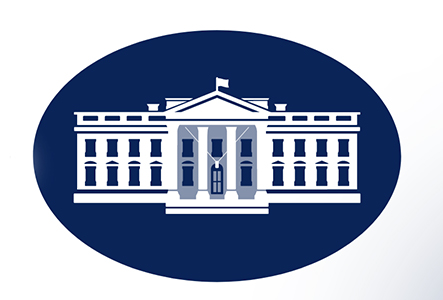On October 30, President Biden issued an Executive Order establishing new standards for artificial intelligence (AI). The order focuses on safety and security, privacy protections, advancement of equity and civil rights, promotion of innovation and competition and advancing American leadership in AI.
The Executive Order directs the following actions:
New Standards for AI Safety and Security
The Executive Order:
- Requires that developers of the most powerful AI systems share their safety test results and other critical information with the U.S. government. In accordance with the Defense Production Act, the Order will require that companies developing any foundation model that poses a serious risk to national security, national economic security, or national public health and safety must notify the federal government when training the model and must share the results of all red-team safety tests. These measures will ensure AI systems are safe, secure and trustworthy before companies make them public.
- Develop standards, tools and tests to help ensure that AI systems are safe, secure and trustworthy. The National Institute of Standards and Technology (NIST) will set the rigorous standards for extensive red-team testing to ensure safety before public release. The Department of Homeland Security will apply those standards to critical infrastructure sectors and establish the AI Safety and Security Board. The Departments of Energy and Homeland Security will also address AI systems’ threats to critical infrastructure, as well as chemical, biological, radiological, nuclear and cybersecurity risks.
- Protect against the risks of using AI to engineer dangerous biological materials by developing strong new standards for biological synthesis screening. Agencies that fund life science projects will establish these standards as a condition of federal funding, creating powerful incentives to ensure appropriate screening and manage risks potentially made worse by AI.
- Protect Americans from AI-enabled fraud and deception by establishing standards and best practices for detecting AI-generated content and authenticating official content. The Department of Commerce will develop guidance for content authentication and watermarking to clearly label AI-generated content. Federal agencies will use these tools to make it easy for Americans to know that the communications they receive from their government are authentic—and set an example for the private sector and governments around the world.
- Establish an advanced cybersecurity program to develop AI tools to find and fix vulnerabilities in critical software, building on the Biden-Harris Administration’s ongoing AI Cyber Challenge. Together, these efforts will harness AI’s potentially game-changing cyber capabilities to make software and networks more secure.
- Order the development of a National Security Memorandum that directs further actions on AI and security, to be developed by the National Security Council and White House Chief of Staff. This document will ensure that the U.S. military and intelligence community use AI safely, ethically and effectively in their missions, and will direct actions to counter adversaries’ military use of AI.
Protecting Americans’ Privacy
Understanding that AI not only makes it easier to extract, identify and exploit personal data, but also heightens incentives to do so because companies use data to train AI systems, the Executive Order calls on Congress to pass bipartisan data privacy legislation to protect all Americans, especially kids, and directs the following actions:
- Protect Americans’ privacy by prioritizing federal support for accelerating the development and use of privacy-preserving techniques—including ones that use cutting-edge AI and that let AI systems be trained while preserving the privacy of the training data.
- Strengthen privacy-preserving research and technologies, such as cryptographic tools that preserve individuals’ privacy, by funding a Research Coordination Network to advance rapid breakthroughs and development. The National Science Foundation will also work with this network to promote the adoption of leading-edge privacy-preserving technologies by federal agencies.
- Evaluate how agencies collect and use commercially available information—including information they procure from data brokers—and strengthen privacy guidance for federal agencies to account for AI risks. This work will focus on commercially available information containing personally identifiable data.
- Develop guidelines for federal agencies to evaluate the effectiveness of privacy-preserving techniques, including those used in AI systems. These guidelines will advance agency efforts to protect Americans’ data.
Advancing Equity and Civil Rights
Irresponsible uses of AI can lead to and deepen discrimination, bias, and other abuses in justice, healthcare, and housing. The Biden-Harris Administration previously published the Blueprint for an AI Bill of Rights and issued an Executive Order directing agencies to combat algorithmic discrimination, while enforcing existing authorities to protect people’s rights and safety. The President’s new order directs the following additional actions:
- Provide clear guidance to landlords, Federal benefits programs and federal contractors to keep AI algorithms from being used to exacerbate discrimination.
- Address algorithmic discrimination through training, technical assistance and coordination between the Department of Justice and Federal civil rights offices on best practices for investigating and prosecuting civil rights violations related to AI.
- Ensure fairness throughout the criminal justice system by developing best practices on the use of AI in sentencing, parole and probation, pretrial release and detention, risk assessments, surveillance, crime forecasting and predictive policing, and forensic analysis.
Standing Up for Consumers, Patients and Students
AI can bring real benefits to consumers, but also raises the risk of injuring, misleading or otherwise harming Americans. To protect consumers while ensuring that AI can make Americans better off, the Executive Order directs the following actions:
- Advance the responsible use of AI in health care and the development of affordable and life-saving drugs. The Department of Health and Human Services will also establish a safety program to receive reports of—and act to remedy – harms or unsafe healthcare practices involving AI.
- Shape AI’s potential to transform education by creating resources to support educators deploying AI-enabled educational tools, such as personalized tutoring in schools.
Supporting Workers
AI is changing America’s jobs and workplaces, offering both the promise of improved productivity but also the dangers of increased workplace surveillance, bias and job displacement. To mitigate these risks, support workers’ ability to bargain collectively, and invest in workforce training and development that is accessible to all, the President directs the following actions:
- Develop principles and best practices to mitigate the harms and maximize the benefits of AI for workers by addressing job displacement; labor standards; workplace equity, health, and safety; and data collection. These principles and best practices will be developed to benefit workers by providing guidance to prevent employers from undercompensating workers, evaluating job applications unfairly or impinging on workers’ ability to organize.
- Produce a report on AI’s potential labor-market impacts, and study and identify options for strengthening federal support for workers facing labor disruptions, including from AI.
Promoting Innovation and Competition
The Executive Order seeks to ensure that the U.S. continue to lead the way in innovation and competition through the following actions:
- Catalyze AI research across the U.S. through a pilot of the National AI Research Resource—a tool that will provide AI researchers and students access to key AI resources and data—and expanded grants for AI research in vital areas like healthcare and climate change.
- Promote a fair, open and competitive AI ecosystem by providing small developers and entrepreneurs access to technical assistance and resources, helping small businesses commercialize AI breakthroughs and encouraging the Federal Trade Commission to exercise its authorities.
- Use existing authorities to expand the ability of highly skilled immigrants and nonimmigrants with expertise in critical areas to study, stay and work in the U.S. by modernizing and streamlining visa criteria, interviews and reviews.
Advancing American Leadership Abroad
AI’s challenges and opportunities are global and therefore require collaboration with other nations to support safe, secure and trustworthy deployment and use of AI worldwide. To that end, the President directs the following actions:
- Expand bilateral, multilateral and multistakeholder engagements to collaborate on AI. The State Department, in collaboration, with the Commerce Department will lead an effort to establish robust international frameworks for harnessing AI’s benefits and managing its risks and ensuring safety.
- Accelerate development and implementation of vital AI standards with international partners and in standards organizations, ensuring that the technology is safe, secure, trustworthy and interoperable.
- Promote the safe, responsible, and rights-affirming development and deployment of AI abroad to solve global challenges, such as advancing sustainable development and mitigating dangers to critical infrastructure.
Ensuring Responsible and Effective Government Use of AI
AI can expand U.S. agencies’ capacity to regulate, govern and disburse benefits, and it can cut costs and enhance the security of government systems. However, use of AI can pose risks, such as discrimination and unsafe decisions. To ensure the responsible government deployment of AI and modernize federal AI infrastructure, the President directs the following actions:
- Issue guidance for agencies’ use of AI, including clear standards to protect rights and safety, improve AI procurement and strengthen AI deployment.
- Help agencies acquire specified AI products and services faster, more cheaply and more effectively through more rapid and efficient contracting.
- Accelerate the rapid hiring of AI professionals as part of a government-wide AI talent surge led by the Office of Personnel Management, U.S. Digital Service, U.S. Digital Corps and Presidential Innovation Fellowship. Agencies will provide AI training for employees at all levels in relevant fields.
For more on the Biden-Harris Administration’s work to advance AI, and for opportunities to join the Federal AI workforce, visit AI.gov.







